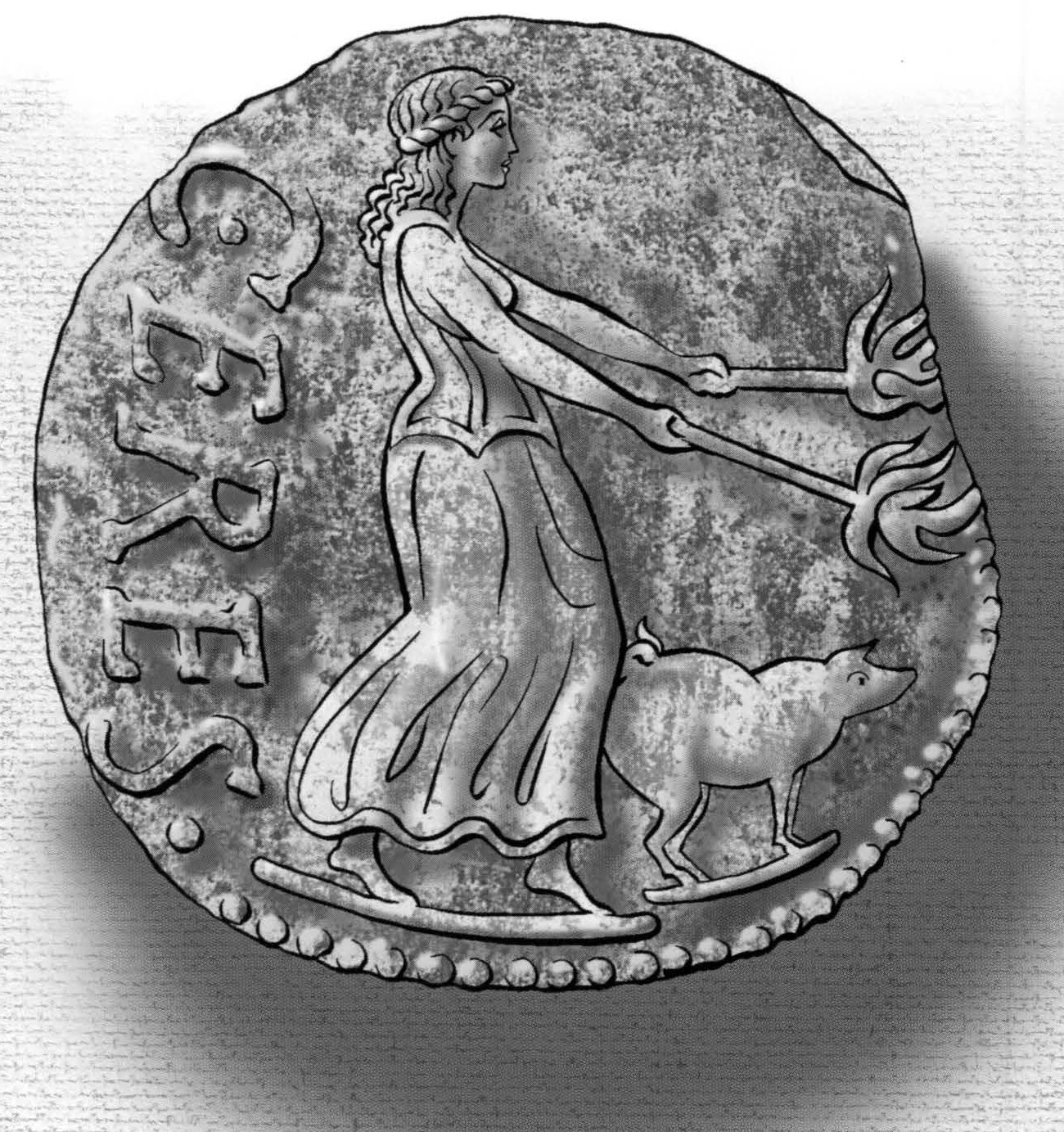Ceres
Publié le 22/02/2012
Extrait du document

Roman An ancient goddess of living things,
of grains and other plants. The cult of Ceres appears to
predate 600 b.c. when she was likely seen as a foundation
goddess, a variation of the Earth Mother. Ceres
provided protection for the life cycle of plants, a very
important function in an agricultural society. Legends
give Ceres credit for being the first to harvest grains.
Romans celebrated Ceres during the festival of
Cerialia on April 19, which was part of the oldest
Roman religious calendar.
Despite her ancient popularity, Ceres was one of
the first deities of Italy to be influenced and finally
absorbed by Greek mythology (see Hellenization).
According to one prominent story, the citizens of
the young city of Rome were under attack by their
neighbors from Etruria. The leaders consulted an
oracle, who advised them to bring to Rome worship
of the Greek goddess Demeter and the god
Dionysus. The worship of those two deities would
save Rome from the attackers.
In about 496 b.c., the Romans built a temple
on the Aventine Hill and dedicated it to Demeter
and Dionysus, whom they came to call Bacchus.
From that time on, the identity of Ceres, her
responsibilities, and her cults merged into those of
Demeter. Most of the myths of Ceres, the stories and
family relationships, were those of Demeter using the
Roman names for the Greek gods. In this form, Ceres
was the mother of Proserpina.
The word cereal, which in its broadest sense means
grass or edible grains, comes from the name of this
Roman goddess.
In astronomy, Ceres is the largest known Earthorbiting
asteroid, 1,000 kilometers in diameter, which
was discovered in 1800.
